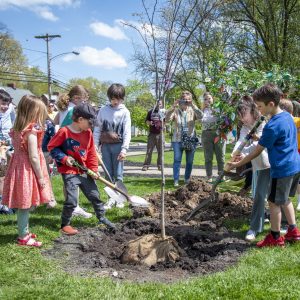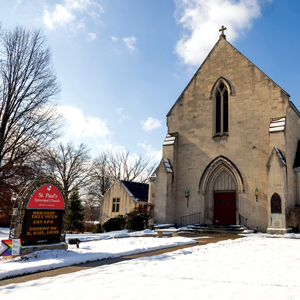Grown-Up Games: Mah-jongg

Mah-jongg groups are springing up all over these days. People are playing at Temple Emanuel of the South Hills, in neighborhood groups and at the Galleria, with Mt. Lebanon Newcomers & Neighbors. The game has spread like wildfire, with more people (mostly women) joining in every week.
The game is played with a set of 144 tiles, based on Chinese characters and symbols. Play begins with each player receiving 13 tiles. In turn, players draw and discard tiles as they attempt to complete one of 50 or more hands, each made up of varying patterns.
Mah-jongg is a combination of strategy and luck, and relatively easy to pick up. One reason for its popularity is the social component and the relationships that develop among regular players. It’s played in groups of four around a square table, like bridge.
“I started a neighborhood game about two years ago now,” said Marcy Gelman of Newburn Drive. “When I moved here, I thought it would be a great way to meet people, and it has been.”
“It’s super fun!” said Erin Monaghan, Newburn Drive, who learned to play in Gelman’s group. “You can use it as a relaxation game if you’ve had a long day and just want to unwind and have fun and chat. Or you can get super into it and be more strategic if you’re feeling a little more energized. So I feel like it’s the perfect thing to either unwind or be a bit more competitive, depending on your mood.”
Many players have their mothers’ or grandmothers’ well-worn mah-jongg sets from decades ago and feel as though they’re continuing a family tradition.

“That’s another really interesting thing: the history and passing them down through generations,” said Gelman. “Whenever I’m at the Galleria and see people playing, I always look at and comment on their mah jongg sets.”
Helaine Cetorelli of Greenhurst Drive has both of her grandmothers’ sets. “I feel like it connects me back to both of them,” she said.
Laura Young, Shadowlawn Avenue, plays in a number of groups, including at Temple Emanuel, in Marcy Gelman’s group, and at the Galleria. She rediscovered the game about a year ago through the temple group and has now introduced it to a number of other friends and acquaintances.
“For me, it’s the socializing,” she said. “I really enjoy having a group to be in. It’s also good to use our brains in a way that we may not do on a daily basis. One of my good friends that I play with, we both lost mothers to Alzheimers. We know we’re supposed to be using our brains—we know it’s good for us!”
Young also finds mah jongg a great stress reliever. “It’s doing something for yourself. Some people get massages for self-care, some people come and use their brains for a little bit. In one of my games, there’s a woman who’s going through a lot. She has two ailing parents, young kids, and this is a relaxing break for her.”
“It’s good for the memory,” said Cetorelli. “You have to pay attention. Personally, I find it relaxing though, especially the social aspect. The tiles are just the mechanism allowing you to connect.”
Monaghan also appreciated the fact that joining her neighborhood game allowed her to get to know women who were both younger and older than she is. “My husband and I moved here and we don’t have kids, but this has been a great way to meet people of different ages and different family situations.”
Gelman agrees. “Any age can play. My daughter is 14, and I taught her how to play so if we ever need a fourth, she’ll come downstairs and play.
“Anybody can learn, and it’s a great way to get to know your neighbors. I think we’re all desperate for community after COVID and with all the social media and technology. We’re desperate to just sit with other people and kibitz.”





